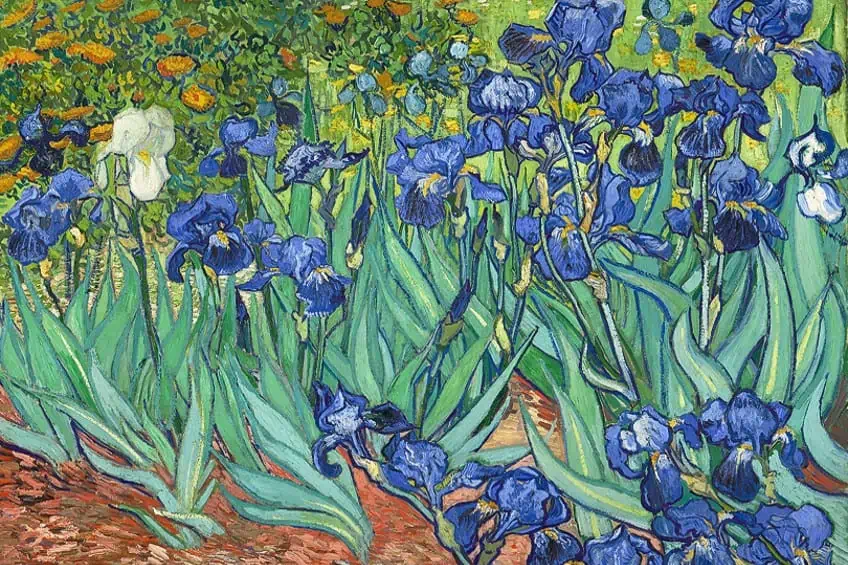Famous Paintings of Nature – Explore the Top Nature Paintings
Since the start of time, mankind has always had a very special relationship with the natural world. It is one of our greatest inspirations when it comes to aesthetics, and almost all of our creative principles (such as the color wheel or rule of thirds) are taken from nature. If you would like to find out more about how nature influences art, then keep reading.
Contents
- 1 A Brief History of Nature Paintings
- 2 Famous Paintings of Nature
- 2.1 Monk by the Sea (c. 1808 – 1810) by Caspar David Friedrich
- 2.2 The Great Wave (1831) by Katsushika Hokusai
- 2.3 Roseate Spoonbill (1836) by John James Audubon
- 2.4 The Oxbow (The Connecticut River Near Northampton) (1836) by Thomas Cole
- 2.5 On the Beach at Trouville (1863) by Eugène Boudin
- 2.6 Irises (1889) by Vincent van Gogh
- 2.7 The Japanese Bridge (The Water-Lily Pond) (1899) by Claude Monet
- 2.8 Mont Sainte – Victoire (c. 1904 – 1906) by Paul Cézanne
- 2.9 L’Estaque (1906) by André Derain
- 2.10 The Flamingoes (1907) by Henri Rousseau
- 2.11 Hill with Lighthouse (1927) by Edward Hopper
- 2.12 Black Mesa Landscape, New Mexico (1930) by Georgia O’Keeffe
- 2.13 Hardkoolbome – Bosveld (1945) by Jacobus Hendrik Pierneef
- 2.14 Agrigente (1954) by Nicolas de Staël
- 2.15 English Oak (2012) by Bryan Nash Gill
- 3 Frequently Asked Questions
A Brief History of Nature Paintings
In the East, paintings and drawings of nature were being created as far back in time as the Han dynasty (206 BC – 220 AD). The connection between man and nature was central to many religions in this area such as Daoism, Confucianism, and Buddhism. Mountains in particular were seen as a stairway to the divine. Thus, nature artists have always been highly respected in most of Asia. So much so that even members of the government (known as literati) were expected to practice painting nature to be successful.
In Western art, on the other hand, the first paintings of nature can be traced back to the times of Antiquity.
Both the Greeks and Romans from this period would paint the walls of their homes with murals of beautiful landscapes. Even when they were indoors, they felt the need to be closer to nature. Thus, it is clear that nature has a definite allure for human beings. This is largely because humanity is part of nature, although we often tend to see it as an external force.
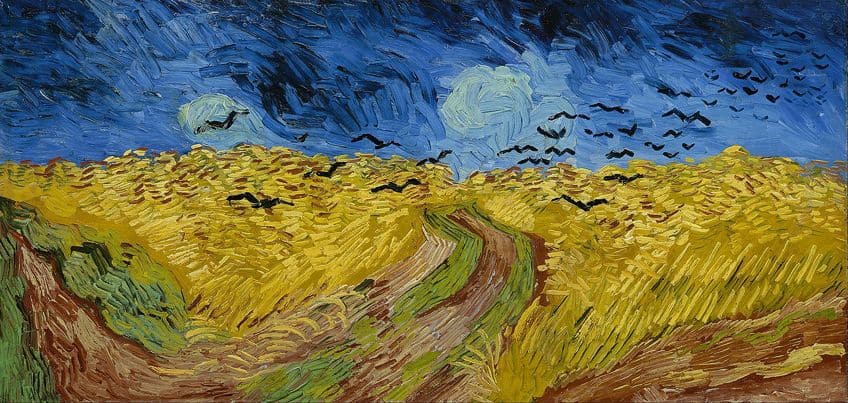
However, after this trend of natural murals faded, nature took a backseat in Western art. Although it was almost always present in paintings, it was simply a background rather than the main feature. That was until artists such as Pieter Brueghel the Elder (c. 1525 – 1569) began creating paintings of nature in which figures either played a minor role or were nonexistent. This style of painting began to gain popularity in Belgium and the Netherlands and only spread to the rest of Europe much later.
It was only with the rise of the Romantic art movement (1780 – 1850) that paintings of nature became popular throughout Western art. Nature played a major role in the ideals of the Romantics; they viewed it as a sublime force that should be both feared and respected.
For many Romantics, nature was also linked with nostalgia and a longing for the pastoral life that existed pre-Industrialization. Another art movement in which nature was of great importance was Impressionism (1865 – 1885). Artists that were part of this movement had a clear reverence for nature and spent as much time studying it as possible. En Plein air painting was very common, where artists would paint nature in the outdoors, capturing the image exactly as they saw it at that moment.

For Impressionists, the different color palettes produced by nature during the various seasons or times of day were fascinating. Some of the most famous paintings of nature come from the art movements mentioned above. However, this does not mean that nature paintings became any less important in more recent times. Contemporary art is simply more diverse in subject matter and style than previous art movements.
Modern artists still show a strong preference for expressing the beauty of nature in their work. In fact, it is unlikely that nature will ever cease to inspire artists of any future generations.
Famous Paintings of Nature
The number of nature paintings in existence is almost too large to comprehend – it would take far too long to learn about every one of them. Therefore, this list contains only 15 famous paintings of nature as a starting point for nature painting enthusiasts.
Monk by the Sea (c. 1808 – 1810) by Caspar David Friedrich
| Artist | Caspar David Friedrich (1774 – 1840) |
| Date Painted | c. 1808 – 1810 |
| Medium | Oil on canvas |
| Dimensions (cm) | 172 x 110 |
| Where It Is Currently Housed | Alte Nationalgalerie, Berlin, Germany |
| What It Is Worth | Uncertain |
Caspar David Friedrich was a German artist known for his participation in the Romantic art movement. Like many Romantics, Friedrich had a penchant for painting nature. Most of Friedrich’s paintings have a similar composition made up of an untouched landscape and his famous Rückenfigur (a minor figure in a painting who looks out over a landscape). The Rückenfigur inspired the work of many later prominent artists such as Gustave Courbet, James Abbott McNeil Whistler, and Franz Marc.
Monk by the Sea (c. 1808) is no exception, containing Friedrich’s signature Rückenfigur, who, in this case, is a monk.
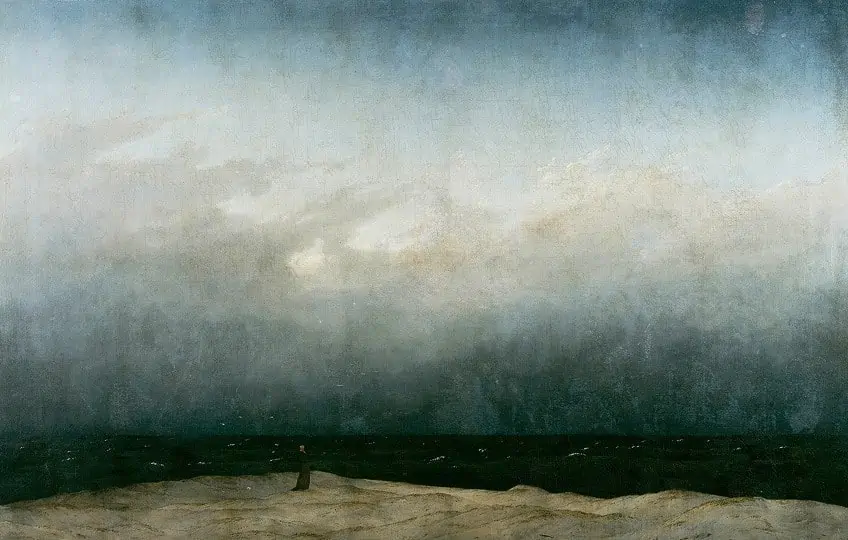
The presence of the monk alludes to the connection between nature and God, and also adds a feeling of quiet contemplation. Many believe that Friedrich modeled the monk in the painting after himself, which is likely because he was an extremely religious man. Monk by the Sea received a great deal of criticism upon its first exhibition to the public. Many felt that the lack of repoussoir (an artistic device that draws the viewer into the painting) made it very cold and uninviting.
However, despite this, the painting was bought in 1810 by King Frederick Wilhelm III of Prussia.
The Great Wave (1831) by Katsushika Hokusai
| Artist | Katsushika Hokusai (1760 – 1849) |
| Date Painted | 1831 |
| Medium | Ink on paper (woodblock print) |
| Dimensions (cm) | 38 x 26 |
| Where It Is Currently Housed | As it was a print, copies of The Great Wave can be seen in many museums and art galleries around the world |
| What It Is Worth | Estimated at $150,000 |
Katsushika Hokusai was a Japanese painter and printmaker who was popular during the Edo period (1603 – 1868). This was a very prosperous time for Japan, which means that art was a major priority. Japan’s isolationist policies also meant that a unique and truly Japanese art style was developed with no outside influences.
Yet, managing to get his hands on art illegally imported from the Netherlands, Hokusai’s early fusion of Eastern and Western art styles is what made him so revolutionary.
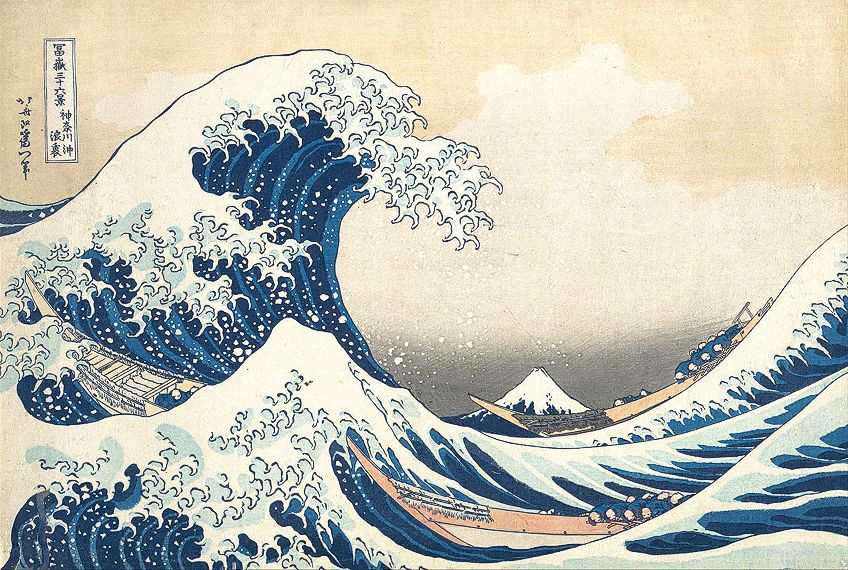
Western influence began to be clear in Hokusai’s art style midway through his career. This is most evident in his incorporation of Prussian Blue, a bold blue pigment that stood in stark contrast to the earthy tones that were typical of Japanese art.
Whilst he was already an established artist, his unique use of color put him above the rest.
The Great Wave (1831) is one of the paintings in Hokusai’s Thirty-six Views of Mount Fuji series. As a Nichiren Buddist, Hokusai had an important connection with nature and Mount Fuji in particular. The way he captured the crashing of waves in such a simple yet powerful way cannot be rivaled.
Roseate Spoonbill (1836) by John James Audubon
| Artist | John James Audubon (1785 – 1851) |
| Date Painted | 1836 |
| Medium | Aquatint |
| Dimensions (cm) | 96,4 x 63,8 |
| Where It Is Currently Housed | Fogg Art Museum, Cambridge, United States of America |
| What It Is Worth | Estimated at $15,000 – 20,000 |
John James Audubon was a French national born in Saint-Domingue (current day Haiti). After being schooled in France, he was eventually sent to the United States to avoid military service during the Napoleonic Wars. There, he lived at Mill Grove, a farm in Philadelphia that was owned by his father (and is now a historical site).
Living out in the countryside gave Audubon the time to pursue his main interests in painting and ornithology.
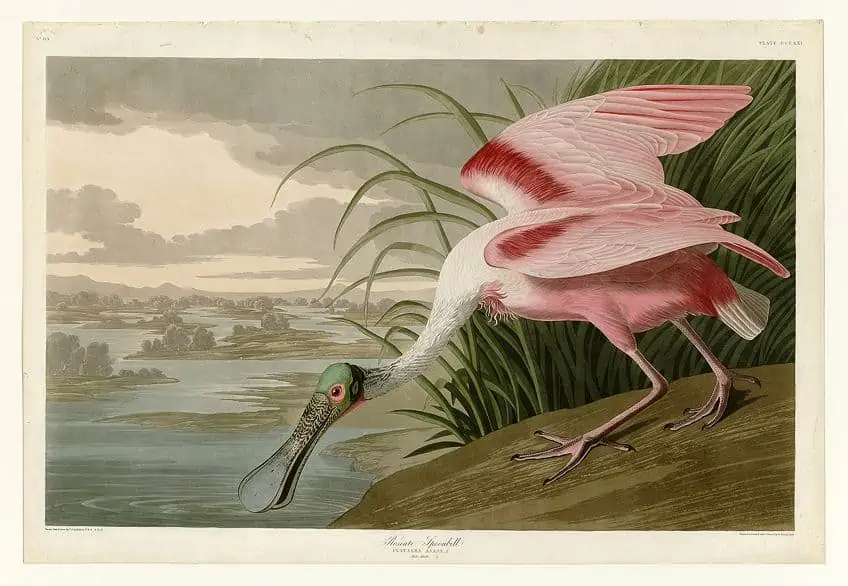
Audubon spent his days hunting birds so that he could study them up close. After he acquired a bird, he would use wire to pose it as naturally as possible before painting it. This was revolutionary in ornithological illustration, as up until then, birds had been depicted in a way stiff and awkward. Audubon’s realism also far exceeded that of any other illustrations at the time.
In this way, he was able to bridge the gap between science and art.
The Oxbow (The Connecticut River Near Northampton) (1836) by Thomas Cole
| Artist | Thomas Cole (1801 – 1848) |
| Date Painted | 1836 |
| Medium | Oil on canvas |
| Dimensions (cm) | 193 x 131 |
| Where It Is Currently Housed | The Metropolitan Museum of Art, New York City, United States of America |
| What It Is Worth | Uncertain |
Thomas Cole was born in England but moved to the United States at the age of 18 years old. Cole was inspired by the ideals of Romanticism, which was popular in Europe from the late 1800s to the mid-1900s. However, taking influence from his new home, he developed an art movement that was unique to the US.
It is for this reason that Cole is believed to be the founder of the Hudson River School, the first art fraternity of the New World.

Cole was enthralled with the untouched beauty of the American landscape at this time. However, he was also a believer in Manifest Destiny, the notion that it was God’s will that America should be developed in much the same way as Europe.
This ideology is clear in The Oxbow (1836) through the juxtaposition of the sunny pastoral lands and the stormy rugged terrain.
On the Beach at Trouville (1863) by Eugène Boudin
| Artist | Eugène Boudin (1824 – 1898) |
| Date Painted | 1863 |
| Medium | Oil on wood |
| Dimensions (cm) | 45.7 x 25.4 |
| Where It Is Currently Housed | Musée d’Orsay, Paris, France |
| What It Is Worth | Estimated at $500,000 – $800,000 |
Eugéne Boudin was a French artist whose works had a profound impact on the creation of the Impressionist movement. Growing up in the small port town of Honfleur, Boudin was heavily influenced by the sea and marine life. After learning about the technique of painting outdoors (which was commonplace amongst Dutch artists), Boudin was one of the first French artists to practice painting en Plein air. He in turn taught this to the famous Impressionist Claude Monet.
Boudin spent a huge portion of his life painting nature.

The Beach at Trouville (1863) is one of many paintings depicting the coastlines of Normandy. There, he often painted the wealthy holiday-makers who frequented the beaches. His famous paintings of nature successfully convey the sense of joy that accompanies summertime.
Irises (1889) by Vincent van Gogh
| Artist | Vincent van Gogh (1853 – 1890) |
| Date Painted | 1889 |
| Medium | Oil on canvas |
| Dimensions (cm) | 93 x 71 |
| Where It Is Currently Housed | Getty Museum, Los Angeles, United States of America |
| What It Is Worth | Estimated at $100 million |
Vincent van Gogh is one of the most well-known artists in history. His talent as well as his struggles with mental illness (which was greatly misunderstood during his lifetime) have touched the hearts of many people from around the world. His famous artworks, of which there are many, have gone on to inspire numerous artists of later generations. In 1889, Van Gogh was admitted to St Paul-de-Mausole asylum for the mentally ill. He had struggled with manic depression for the majority of his life.
According to Van Gogh, art was both his saving grace and the greatest cause of his unhappiness.

Despite having immense talent, he was never satisfied with his artworks, often painting over them or even destroying them. His first few months at St Paul-de-Mausole were the happiest he had experienced in a very long time, which is reflected in his art from that time.
He was inspired to paint Irises (1889) by the irises that grew outside the asylum. It is glaringly apparent from Irises that Van Gogh found solace in nature.
The Japanese Bridge (The Water-Lily Pond) (1899) by Claude Monet
| Artist | Claude Monet (1840 – 1926) |
| Date Painted | 1899 |
| Medium | Oil on canvas |
| Dimensions (cm) | 101,6 x 81,3 |
| Where It Is Currently Housed | Princeton University Art Museum, New Jersey, United States of America |
| What It Is Worth | Estimated between $50 million and 150 million |
Claude Monet is renowned for his beautiful Impressionist paintings. The Impressionist art movement gained its name thanks to his famous seascape Impression, Soleil Levant. However, what made Monet a lasting name was his Water Lilies series.
In the final years of his life, Monet became obsessed with painting the water lilies he grew in his pond.
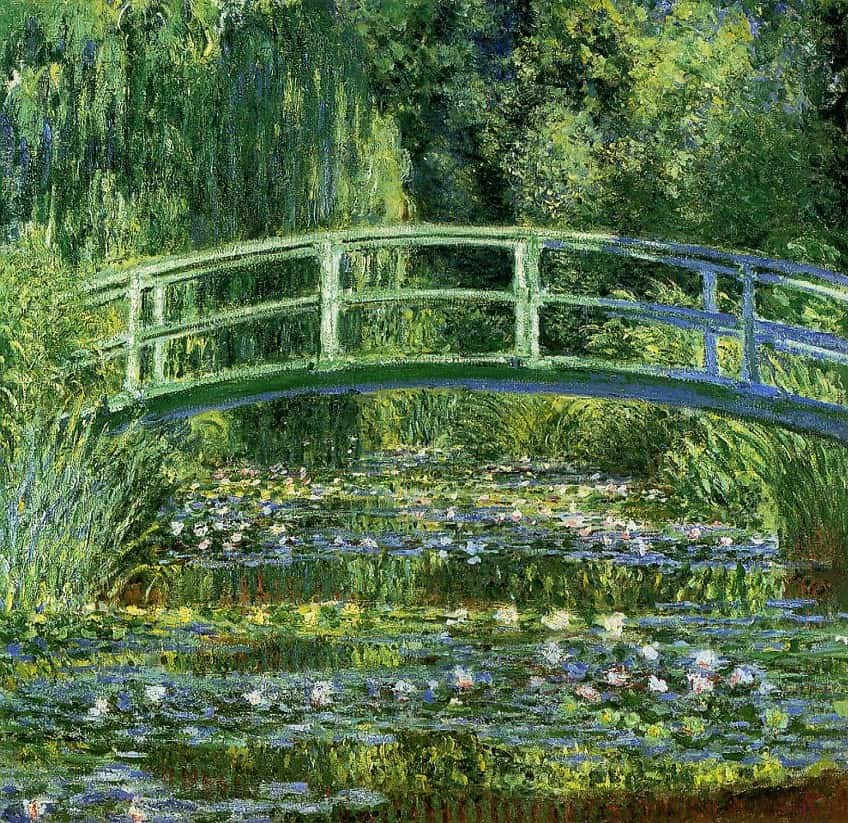
The Japanese Bridge (1899) is one of the nearly 300 paintings that make up the Water Lilies series. It incorporates all three of Monet’s passions: art, botany, and Japanese culture. To create the perfect subject for his paintings, Monet invested a great deal of time and money into building a giant lily pond with a Japanese-style bridge over it.
Each year, thousands of nature lovers and art enthusiasts flock to Monet’s home in Giverny, France to bear witness to his iconic aquatic garden in person.
Mont Sainte – Victoire (c. 1904 – 1906) by Paul Cézanne
| Artist | Paul Cézanne (1839 – 1906) |
| Date Painted | c. 1904 – 1906 |
| Medium | Oil on canvas |
| Dimensions (cm) | 92 x 73 |
| Where It Is Currently Housed | Musée d’Orsay, Paris, France |
| What It Is Worth | $100 million |
Paul Cézanne played an integral role in both the Impressionist and Post-Impressionist art movements. He popularized the multipoint perspective technique, which changed the evolution of modern art. His combination of bold colors and simple forms inspired the likes of Pablo Picasso and Henri Matisse.
Although Cézanne knew that living in Paris was necessary to get his art career off the ground, he struggled to adjust to city life.

After moving back and forth between Paris and the countryside, he eventually settled in Aix-en-Provance. It was here that he painted Mount Sainte-Victoire (c. 1904), a view that he could see from his home. He was enamored with the shapes and colors of the mountain throughout the seasons and thus painted it several times.
L’Estaque (1906) by André Derain
| Artist | André Derain (1880 – 1954) |
| Date Painted | 1906 |
| Medium | Oil on canvas |
| Dimensions (cm) | 45 x 35 |
| Where It Is Currently Housed | The Museum of Fine Arts, Houston, United States of America |
| What It Is Worth | Uncertain |
André Derain was a French artist who, along with Henri Matisse, is credited with the creation of Fauvism. The art movement only lasted about five years but made a large impact due to its bold use of color. Fauvism would also have a lasting effect in that it influenced later art movements such as Expressionism. L’Estaque is an area in southern France that has piqued the interest of many artists throughout time.
It is likely that before creating his own ode to the region, Derain was inspired by the likes of Cézanne and Gauguin.
However, Derain’s L’Estaque (1906) is far more vibrant than any other depiction of the area. Using bright complementary colors instead of light and shadow, he creates an interesting and unique effect. Small figures in the painting link mankind to nature to reinforce the connection between the two.
Due to the figures being so tiny there is a feeling of the sublime of nature.
The Flamingoes (1907) by Henri Rousseau
| Artist | Henri Rousseau (1844 – 1910) |
| Date Painted | 1907 |
| Medium | Oil on canvas |
| Dimensions (cm) | 163,3 x 114 |
| Where It Is Currently Housed | Private collection |
| What It Is Worth | Uncertain |
Henri Rousseau was a self-taught French Primitive artist. He is often jokingly referred to as “Le Douanier” due to his primary job as a tax collector. Although he had spent many years creating drawings of nature, Rousseau’s art career only began when he was in his 40s. Although he had never received any formal training, his artworks had a naive charm about them that many people enjoyed.
The Flamingoes (1907) is said to have been inspired by a scene Rousseau saw during his time in the military.
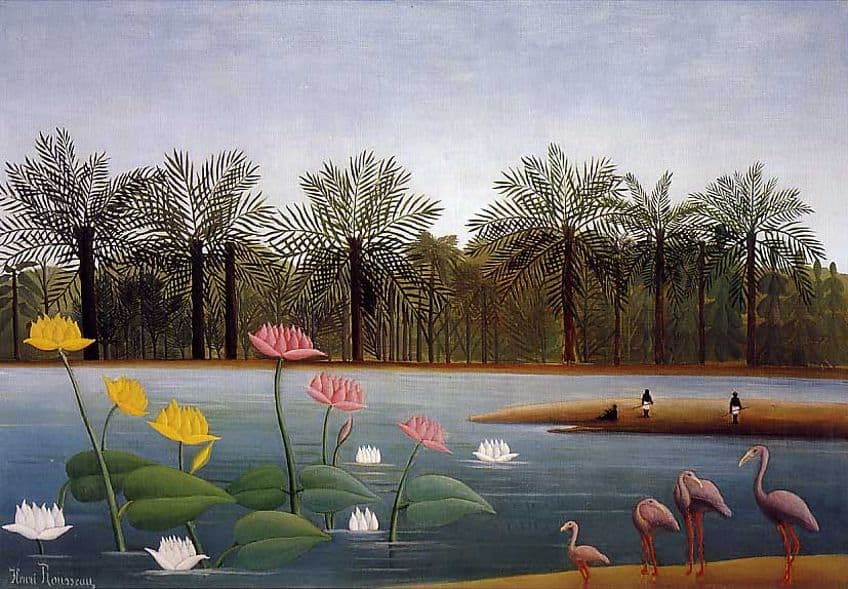
Whilst on patrol in Mexico, he saw a lot of exotic flora and fauna from which he later drew inspiration. It is clear from The Flamingoes that Rousseau was not an expert at proportion, given the flamingoes being dwarfed by gigantic water lilies. However, this does not stop it from being a captivating nature painting.
The juxtaposition of warm pinks and yellows from the blossoms and the cool blues and greens of the water and land create a beautiful balance.
Hill with Lighthouse (1927) by Edward Hopper
| Artist | Edward Hopper (1882 – 1967) |
| Date Painted | 1927 |
| Medium | Oil on canvas |
| Dimensions (cm) | 100,3 x 71,8 |
| Where It Is Currently Housed | Dallas Museum of Art, Dallas, United States of America |
| What It Is Worth | Uncertain |
Edward Hopper was an American Realist artist whose work made a significant impact on American culture. Although they may appear ordinary at first glance, Hopper always managed to infuse his artworks with a sense of atmosphere and emotion. Famous film directors such as Alfred Hitchcock and Ridley Scott have said that his works inspired various elements of Psycho (1960) and Blade Runner (1982), respectively.
Hopper often painted the New England landscape, as he and his wife would visit Cape Cod yearly.
Thus, it is likely that Hill with Lighthouse (1927) was inspired by one of the views he saw there. He manages to convey a sense of loneliness through his heavy use of shadow over the hills as well as that over the little house. A feeling of unease is also created by the presence of the lighthouse, even though there is no sea to be seen.
This feeling of strangeness, even in the most natural setting – is typical of Hopper’s work.
Black Mesa Landscape, New Mexico (1930) by Georgia O’Keeffe
| Artist | Georgia O’Keeffe (1887 – 1986) |
| Date Painted | 1930 |
| Medium | Oil on canvas |
| Dimensions (cm) | 92,1 x 61,6 |
| Where It Is Currently Housed | Georgia O’Keeffe Museum, Santa Fe, United States of America |
| What It Is Worth | Estimated at $44,4 million |
Georgia O’Keeffe is an artist whose name should be commonplace, yet unfortunately, her influence is not discussed enough. Her contributions to the Modern art movement were major, with her abstract and emotive paintings making her work highly original. In 2014, her painting Jimson Weed (1932) sold for more than any other painting created by a female artist.
She was also the first woman to ever have a retrospective of her artwork at the Museum of Modern Art in New York City.
Black Mesa Landscape, New Mexico (1930) was typical of the artworks she created whilst staying in New Mexico. O’Keeffe felt a strong connection to the desert and often spent hours exploring it and collecting bones and rocks to paint. Although it is not O’Keefe’s most famous artwork, in 1996, Black Mesa Landscape was turned into a stamp by the US postal service as an homage to the artist.
Hardkoolbome – Bosveld (1945) by Jacobus Hendrik Pierneef
| Artist | Jacobus Hendrik Pierneef (1886 – 1957) |
| Date Painted | 1945 |
| Medium | Oil on canvas |
| Dimensions (cm) | 67 x 55 |
| Where It Is Currently Housed | Iziko South African Art Gallery, Cape Town, South Africa |
| What It Is Worth | Estimated at $200,000 |
Jacobus Hendrik Pierneef was a South African landscape painter. Almost all of his artworks depict an idealized version of the South African terrain, thus showing the intense love and pride he had for his country. Between 1899 and 1902, Pierneef moved to the Netherlands to escape the conflict of the Anglo-Boer War. However, this distance did not stop him from painting his beloved country.
Hardkoolbome – Bosveld is one of the paintings he created upon his return to South Africa. He is now considered one of the masters of South African art.

Agrigente (1954) by Nicolas de Staël
| Artist | Nicolas de Staël (1914 – 1955) |
| Date Painted | 1954 |
| Medium | Oil on canvas |
| Dimensions (cm) | 73 x 54 |
| Where It Is Currently Housed | Private collection |
| What It Is Worth | Estimated $200 000 to $300 000 |
Nicolas de Staël did not have an easy life. He was born in Russia in 1914, however, he and his family were forced to flee to Poland during the Russian Revolution (1917-1923). Whilst in Poland, both of his parents died leaving him and his sister orphaned. They were sent to a Russian family in Brussels and were raised there.
For the remainder of his life, De Staël struggled with mental health issues, which eventually resulted in his suicide in 1955.
Although De Staël was depressed for the majority of his life, one time that he was truly happy was when he and his family traveled to Agrigento in Sicily. Years later, he painted Agrigente (1953) in the bold hues of red and yellow, which reminded him of the Mediterranean. Whilst his paintings were often simple, he still somehow manages to stop them from feeling unfinished.
This is clear in Agrigente, which is filled to the brim with life.
English Oak (2012) by Bryan Nash Gill
| Artist | Bryan Nash Gill (1961 – 2013) |
| Date Painted | 2012 |
| Medium | Ink and paper |
| Dimensions (cm) | 45 x 43 |
| Where It Is Currently Housed | Jutras Gallery, Illinois, United States of America |
| What It Is Worth | Uncertain |
Bryan Nash Gill was an American artist who had a particularly strong connection with nature. Gill used art as a way to express his admiration and respect for the great outdoors. He began his career in art as a sculptor and glassblower, however, he soon found that ink and paper were more his style.
English Oak (2012) is one of the many prints he made using the stumps of fallen trees, some of which were as old as 200 years.
The various shapes of the stumps and their rings were mesmerizing to Gill. In 2012, he released a book called Woodcuts (2012), which contained a compilation of the woodcut prints he had created from different species of trees. It was named one of the best books of the year by New York Times Magazine.
There is something about nature that compels humans from all backgrounds and periods of history to create art. Whether it be the unassuming beauty of a meadow or the majesty of sprawling mountain range, nature is undeniably enchanting. Hopefully, this article on famous nature paintings has inspired you enough to read more about them or even create some of your own.
Take a look at our paintings of nature webstory here!
Frequently Asked Questions
Who Is the Best Nature Artist?
Art is highly subjective, which makes it very difficult to determine a singular best nature artist. However, certain artists have earned a reputation for their exemplary depictions of the natural world. Some of these artists include Claude Monet, Paul Cézanne, Vincent van Gogh, and Katsushika Hokusai.
What Are Nature Paintings Called?
Typically, paintings of nature are referred to as landscape paintings. However, there are variations of this term in existence, such as seascapes (paintings of the ocean). However, not all nature paintings are landscapes and may instead depict flora and fauna from around the world.
What Did Vincent van Gogh Say About Nature?
Vincent van Gogh was an artist who struggled with several mental illnesses throughout his lifetime. Thus, he often found solace in nature, which is reflected in his art. He believed that true nature lovers could find beauty anywhere, which he later stated in a letter to his brother and fellow artist, Theo van Gogh.
Jordan Anthony is a Cape Town-based film photographer, curator, and arts writer. She holds a Bachelor of Art in Fine Arts from the University of the Witwatersrand, Johannesburg, where she explored themes like healing, identity, dreams, and intuitive creation in her Contemporary art practice. Jordan has collaborated with various local art institutions, including the KZNSA Gallery in Durban, the Turbine Art Fair, and the Wits Art Museum. Her photography focuses on abstract color manipulations, portraiture, candid shots, and urban landscapes. She’s intrigued by philosophy, memory, and esotericism, drawing inspiration from Surrealism, Fluxus, and ancient civilizations, as well as childhood influences and found objects. Jordan is working for artfilemagazine since 2022 and writes blog posts about art history and photography.
Learn more about Jordan Anthony and about us.
Cite this Article
Jordan, Anthony, “Famous Paintings of Nature – Explore the Top Nature Paintings.” artfilemagazine – Your Online Art Source. November 15, 2022. URL: https://artfilemagazine.com/famous-paintings-of-nature/
Anthony, J. (2022, 15 November). Famous Paintings of Nature – Explore the Top Nature Paintings. artfilemagazine – Your Online Art Source. https://artfilemagazine.com/famous-paintings-of-nature/
Anthony, Jordan. “Famous Paintings of Nature – Explore the Top Nature Paintings.” artfilemagazine – Your Online Art Source, November 15, 2022. https://artfilemagazine.com/famous-paintings-of-nature/.


